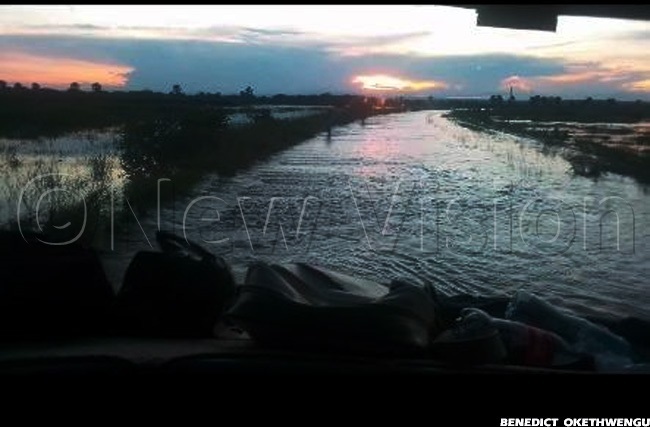Pakwach bridge flooded after River Nile bursts its banks
Oct 26, 2020
This is the second time in less than a year that the river has burst its banks, having last done so in December last year.

ENVIRONMENT
The world's longest river, the Nile, burst its banks at Tangi Monday evening, causing disruptive flooding at the Pakwach bridge in Nwoya district in northern Uganda.
This is the second time in less than a year that the river has burst its banks.
It had last happened in December 2019, which resulted in the blocking of traffic on the Pakwach-Karuma Road for nearly two days.
Monday evening's reoccurance has created similar anxiety among the people of that area.
"It has happened again, and it is likely to be more massive than that of last year because I see the river water surging," said Geoffrey Achora, a resident of Pakwach Town Council.
He said the river burst its bank at around 5pm Ugandan time, and that the road was cut off with only larger vehicles able to negotiate through the flooded section.

Achora said small vehicles that were coming from West Nile were parked at Pakwach Police Station while those that were destined for the region remained stationary at the bus park. This meant that many passengers remained stuck.
"Although no life has been lost, the situation is bad. Small vehicles cannot access the road except the big ones, he said.
Steen Omito, the Pakwach district chairperson, said they notified the Uganda National Roads Authority (UNRA) about the incident, and were optimistic the roads body would intervene.
He warned the travellers to and from West Nile that the road remains impassable.

Omito said the surging water level was likely to damage the ongoing construction work on the Tangi junction-Paraa oil road.
Earlier, a source told New Vision that UNRA had dispatched a team from its Gulu station to rush to flooded section and forge a way by which the situation can handled.
The fate of the stranded passengers in the park also remained unknown.
